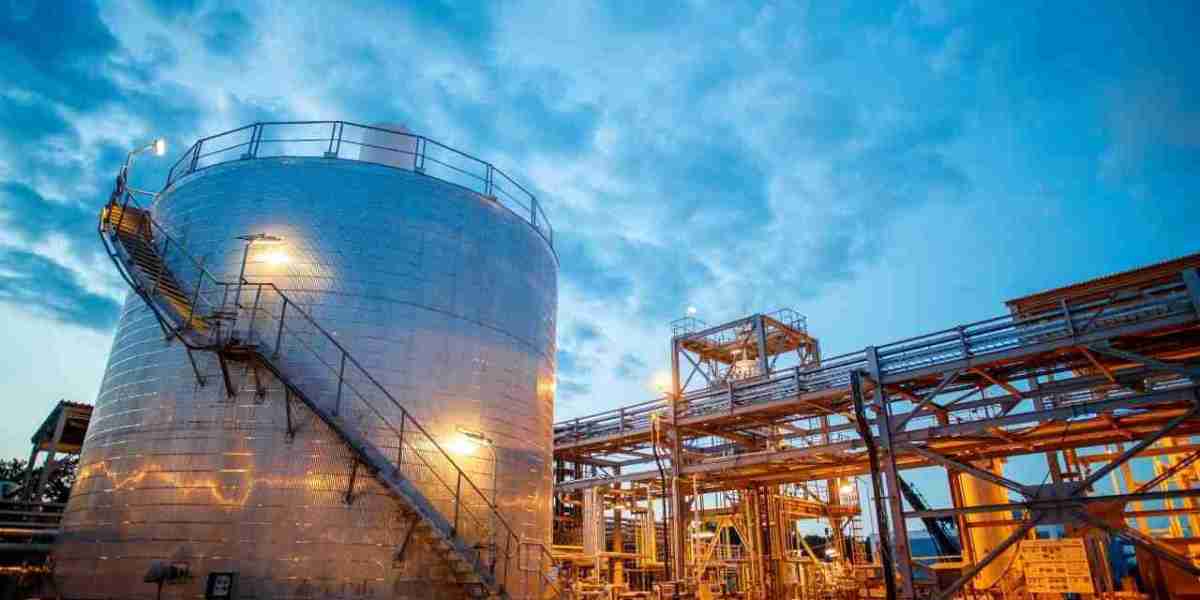The Nigeria oil and gas market size attained a volume of 1.37 MMT in 2024. Rising indigenous participation and local content development, spurred by the country’s Petroleum Industry Act, attract private investments, boosting upstream output and infrastructure growth across marginal oil fields and gas processing zones. As a result, the market is expected to grow at a CAGR of 5.30% during the forecast period of 2025-2034 to reach a volume of 2.30 MMT by 2034.
Nigeria’s oil and gas sector has historically been a cornerstone of the country’s economy, accounting for a significant share of GDP and government revenues. Despite facing challenges such as pipeline vandalism, crude theft, and fluctuating global oil prices, the sector has demonstrated resilience, with recent reforms and strategic initiatives reinvigorating growth prospects.
Government Reforms Driving Growth
One of the most influential factors in Nigeria’s oil and gas resurgence has been the enactment of the Petroleum Industry Act (PIA) in 2021. The PIA has served as a major turning point by streamlining governance structures, providing fiscal clarity, and creating an investor-friendly environment. By reducing bureaucratic hurdles and offering incentives for private sector participation, the act has attracted substantial foreign investment, signaling renewed confidence in Nigeria’s energy market.
According to the Nigerian Upstream Petroleum Regulatory Commission (NUPRC), the country recorded over USD 10 billion in new oil and gas investments by mid-2024. This level of inflow highlights both the domestic and international interest in Nigeria’s untapped potential. Investors are particularly drawn to the country’s untapped marginal fields and underdeveloped gas reserves, recognizing the long-term growth opportunities in both upstream and midstream sectors.
NNPCL Transformation and Strategic Partnerships
Another significant development is the transformation of the Nigerian National Petroleum Company Limited (NNPCL) into a fully commercial entity, a process completed in July 2022. This strategic shift has opened multiple avenues for collaboration with international partners, enabling expansion of refinery capacities and optimization of liquefied natural gas (LNG) output. Partnerships with global firms such as Daewoo and ENI have been pivotal in modernizing infrastructure, increasing efficiency, and boosting production capabilities.
This transformation is also critical in addressing past production setbacks. Nigeria’s oil output had dipped to 1.2 million barrels per day in 2022 due to widespread pipeline vandalism and crude theft. However, with enhanced security measures, regulatory clarity, and infrastructure investments, the country aims to achieve a production target of 1.7 million barrels per day by 2025. Such efforts not only stabilize supply but also enhance Nigeria’s position in the global oil and gas market.
The Decade of Gas Initiative
Recognizing the potential of natural gas as a sustainable energy source, the Nigerian government launched the Decade of Gas initiative. Nigeria holds an estimated 206 trillion cubic feet of proven gas reserves, offering enormous opportunities for domestic industrial use and export. This initiative aims to unlock the value of gas resources, reduce gas flaring, and support the development of gas-based industries, including power generation, fertilizers, and petrochemicals.
The Decade of Gas initiative also includes strategic infrastructure projects like the Nigeria-Morocco Gas Pipeline. Valued at USD 25 billion and backed by ECOWAS, this project underscores Nigeria’s ambition to become West Africa’s gas powerhouse. By providing a reliable export route, the pipeline not only strengthens regional energy security but also positions Nigeria as a key player in Africa’s energy transition.
Local Content and Indigenous Participation
Local content development has been another catalyst for the Nigeria oil and gas market. The government has emphasized the involvement of Nigerian companies in all aspects of oil and gas operations, from exploration and production to logistics and refining. This policy has enhanced skills transfer, created jobs, and stimulated the growth of indigenous enterprises. By fostering a robust local supply chain, Nigeria is building a self-reliant industry that can sustain long-term growth while attracting foreign investors.
Private investment in marginal oil fields has been particularly notable. Historically overlooked due to their small size, these fields are now attracting both domestic and international players, thanks to regulatory support and technological advancements. The resulting increase in production capacity contributes directly to the projected CAGR of 5.30% between 2025 and 2034, reflecting a steady and sustainable growth trajectory.
Infrastructure Expansion and Upstream Development
Infrastructure expansion remains a core focus for Nigeria’s oil and gas sector. Significant investments in refineries, pipelines, storage facilities, and gas processing plants are underway. These improvements not only enhance operational efficiency but also reduce bottlenecks in the supply chain, enabling smoother export and distribution of crude oil and gas products.
Upstream development, particularly in marginal oil fields, is driving new exploration and production opportunities. Technological advancements in seismic surveys, drilling, and reservoir management have made previously uneconomical fields viable. Combined with fiscal incentives under the PIA, these efforts are boosting domestic production and reinforcing Nigeria’s reputation as a promising investment destination.
Global Interest and Future Outlook
Nigeria’s strategic location, vast natural resources, and proactive government policies have piqued global interest. International energy companies are keen to participate in both upstream and midstream projects, while investors are exploring opportunities in LNG, petrochemicals, and renewable integration.
Looking ahead, the Nigeria oil and gas market is expected to reach a volume of 2.30 MMT by 2034, driven by a combination of policy reforms, infrastructure expansion, indigenous participation, and strategic partnerships. The country’s commitment to leveraging its gas reserves, expanding refinery capacity, and optimizing LNG output positions it for long-term growth and regional leadership in energy.






